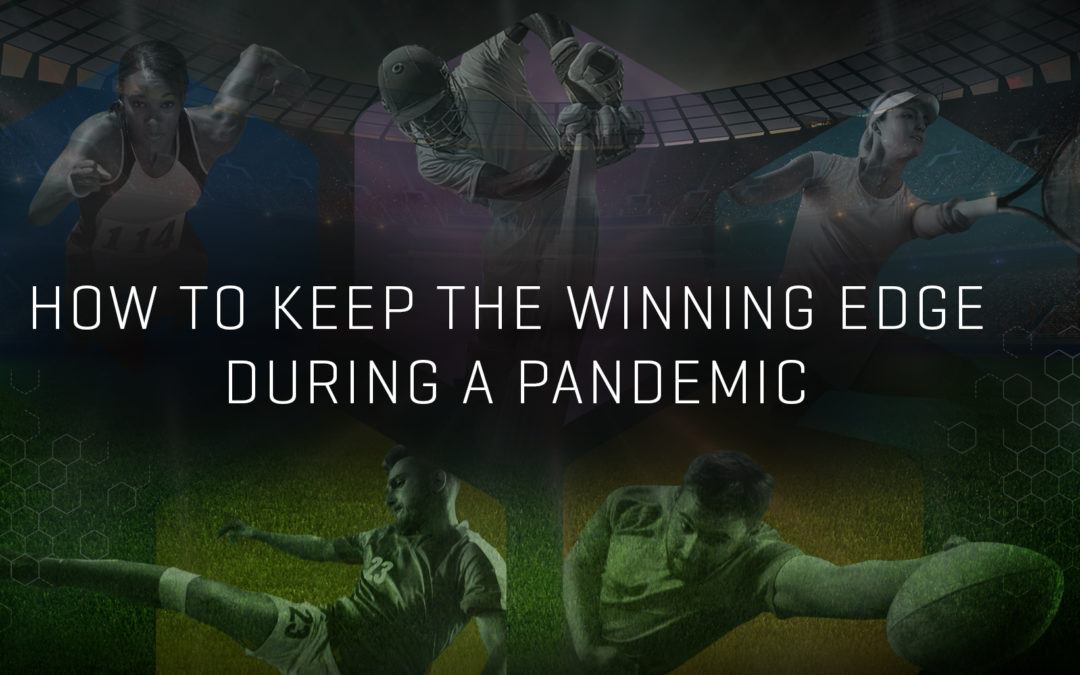A Q&A With Georgina Hurst On The Impact of COVID-19 On Elite Sport
Question: How has the COVID-19 pandemic affected professional sport in the UK?
Professional sports organisations have been significantly impacted by the global pandemic. Firstly, sports teams, clubs and associations have a duty of care to their fans; something they take very seriously. The health and safety of supporters is a key priority. Unfortunately, in order to reduce the risk of catching or spreading the virus, there are currently no physical spectators at sports events in the UK. Clearly, everyone is hoping that will change once COVID is under control but, for now, any form of spectatorship has to be done virtually. Like many other businesses, sports organisations are suffering from huge revenue losses as a result. Without spectators, clubs are losing admissions revenue, merchandise sales, food and beverage, etc. It’s certainly tough for them at the moment. Then, there are the athletes and support staff who have had to completely change their day-to-day routines. They are subjected to regular COVID tests. Training for teams has to be non-contact, socially distanced and largely within small support bubbles. These individual bubbles train separately in order to reduce the risk of transmission. The idea is that if one bubble is compromised it doesn’t have to affect the whole team. However, even that is not always the case – we just have to look at Aston Villa Football Club who, last month, was forced to close its training ground after suffering a “significant coronavirus outbreak”. This almost certainly impacted their 3rd round FA Cup game against Liverpool (which they lost 4-1) as Villa wasn’t able to play its 1st team, instead relying on its under 23s and the academy squad. The matches and tournaments must be strange for the athletes. Without supporters there is little to no atmosphere…. essentially, there is no one to perform for. Then there are those perhaps more frivolous things to consider, such as goal or scoring celebrations, which now have to be muted. You simply can’t run up to your teammate and give them a hug after scoring a goal. You’d be breaking all COVID guidelines. Clearly, I am just scratching the surface, but it’s certainly a peculiar time for Elite Sports organisations.
Question: How has COVID impacted the way that Sports and Exercise Medicine (SEM) staff are working with their athletes?
Athlete wellbeing is of paramount importance to Elite Sports teams at the best of times. After all, it’s the talent and performance of athletes that are a sport’s primary asset. And that performance relies on peak physical fitness and mental health. During a global pandemic, it is even more critical, with teams doing everything they can to minimise the risk of both infection and transmission to others. I’ve already mentioned the creation of small support bubbles – some SEM staff, such as doctors and physios, formulate part of those bubbles. But, the reality is that clinical and support staff have had to introduce new modes of operation to deliver care for their athletes, whilst keeping physical contact to an absolute minimum. This new way of working capitalises on virtual consultations and telemedicine as its mainstay, of which technology plays a huge role. This technology goes a long way to assist doctors and physios to provide an effective clinical service, but, it doesn’t come without its challenges.
Question: What challenges are you referring to?
Well, the delivery of quality care for athletes is dependent on a number of factors. You need to have a great SEM team, such as chief medical officers, team doctors, and physiotherapists – most of whom are members of the Elite Sports organisation staff. We’ve already talked about their new modes of operation. But, what about the support from external specialists. This could include orthopaedic surgeons, radiologists, neurologists, dieticians – the list goes on. Given the lockdown, engaging with 3rd party clinicians (outside of an acute setting) isn’t easy. Mobile technology and video conferencing does bridge some of the gap, but not all. Let’s assume you have a great in-house SEM team and a tried and tested network of 3rd party specialists. Arguably, together they can ‘get by’, but that’s not really enough when you’re dealing at an elite level. So, what’s missing? Simply put – data! In order to take full advantage of the best clinical minds in Elite Sport, you need to empower them with the right medical information, when they need it, whether on a laptop, tablet or mobile phone, and from anywhere in the world. There are several problems SEM professionals face when it comes to data. Firstly, where is it? This may sound flippant, but from my experience, most Elite Sports teams do not have a strategy in place to properly manage their athlete’s medical information. Up until GDPR kicked in, it was not uncommon to have flash drives of athlete’s medical information in kit bags, data on laptops, DVDs of player’s scans strewn around the office – none of it stored centrally, catalogued or managed. One of our customers once told me that Elite Sports teams needed to be held to a ‘higher level of account’ when it comes to the privacy and protection of athlete’s data. Yet, even today, we still hear of some horror stories of how data breaches have occurred, and medical records have fallen into the wrong hands. Although many sports organisations have a summary health record for their athletes (normally a module within their performance management system a.k.a. PMS), they are simply that…. a summary. These systems were never designed as a clinical repository to manage athlete medical data and they certainly do not have the depth required for SEM professionals and support staff to make complex diagnostic and treatment decisions. Furthermore, when we look at athlete injuries – they will often require some form of medical imaging, e.g. ultrasound, MRI, CT scans, etc. This could be to examine new injuries, do comparisons with historical scans, collaborate with other specialists – and all of this alongside a thorough review of the athlete’s medical history, current clinical assessment and perhaps additional functional assessments. After all, many factors may contribute to an athlete’s injury. The data in combination with the experience from the SEM team (who understand the particular demands of the sport in question and its specific functional stresses and injury patterns) assist in the diagnosis. Medical imaging is a critical component in Sport and Exercise Medicine, but it’s also a highly specialised area. PMS applications are unable to manage this data, nor offer the viewing or the collaboration capabilities required to enable medical teams to perform their duties efficiently and effectively.
Question: How can SEM professionals overcome these data issues and create a robust clinical remote working and collaboration environment?
By delivering a digital, 360-degree view of an athlete’s medical history, at the click of button, you are enabling the clinicians to do what they do best – consult, diagnose and treat their athletes to the best of their ability. BridgeHead’s HealthStore® is an independent clinical archive specifically designed to store and protect medical data, then make it available, securely, to those that need it, when they need it, on any device, wherever they may be located around the world, whether in the office, in a clinic or hospital, or by the pitch, ground, swimming pool or roadside. It can be accessed by an individual or a session can be opened up to a range of clinical stakeholders (providing they have the right permissions) to collaborate as part of a virtual, multidisciplinary team (MDT) meeting, particularly in the case of complex injuries that involve closer examination and discussion using medical imaging. Ultimately, medical imaging supports accurate diagnosis, provides information for management to plan and make decisions to return athletes to play, offers screening and pre-game or pre-match assessments and gives technical assistance for certain clinical procedures. When you combine essential components like ease of uploading data and images, speed of data retrieval and access, the provision of quality information, flexibility in how clinical information is viewed and presented, e.g. diagnostic quality images, the ability to confer and collaborate with colleagues as part of an MDT (including internal and external stakeholders) – you have the ingredients to ensure an injured athlete is provided with the most effective treatment plan to return them to fitness in the quickest time possible. During a global pandemic, the ability for SEM teams to work remotely and collaborate, with full availability of an athlete’s clinical data, is considered a game changer and could provide the winning edge for Elite Sports organisations.
Question: What new initiatives are BridgeHead working on that could positively impact Elite Sports?
BridgeHead has recently launched a new point of care testing workflow and data management solution called HiPRES®. Some large NHS organisations in the UK are currently using it for COVID-19 testing and some sports teams are interested to learn whether it would be useful for their athletes and staff members. However, HiPRES was designed to handle all manner of testing workflows, not just COVID. So, we are currently talking to sports bodies and associations as to whether HiPRES could help in a number of ways, such as managing anti-doping. We are also exploring whether there is a demand to utilise HiPRES to track and audit the administering of medication, e.g. when athletes are competing abroad or on tour. The ability to capture this information (data and images), place it into a central repository (in near real time) and make it part of the athlete medical record, viewable almost immediately by the extended SEM team, could be invaluable.
Working in IT Sales for almost 20 years, and specifically in healthcare tech for the last four years, Georgina has learned and continues to learn how technology addresses real issues facing clinicians and when providing the best care to their patients. At BridgeHead Software, Georgina is working to support her customers and partners to address their data management challenges and support them in driving improved patient outcomes.
Before joining BridgeHead Sofware, Georgina held various sales management positions in the UK and across Europe, the Middle East and Africa, at Dell Technologies, Hewlett-Packard, VMTurbo, and other start-up companies. Prior to working in technology, Georgina worked for Pan American Airways in Sales and Marketing and started her career in Germany in the hotel business.
Georgina lives in Surrey with her husband, two children and three labradoodles. She grew up in Thailand and Indonesia and moved to Germany where she met her husband. She spends her free time playing golf, meeting with friends and binge boxset watching.




